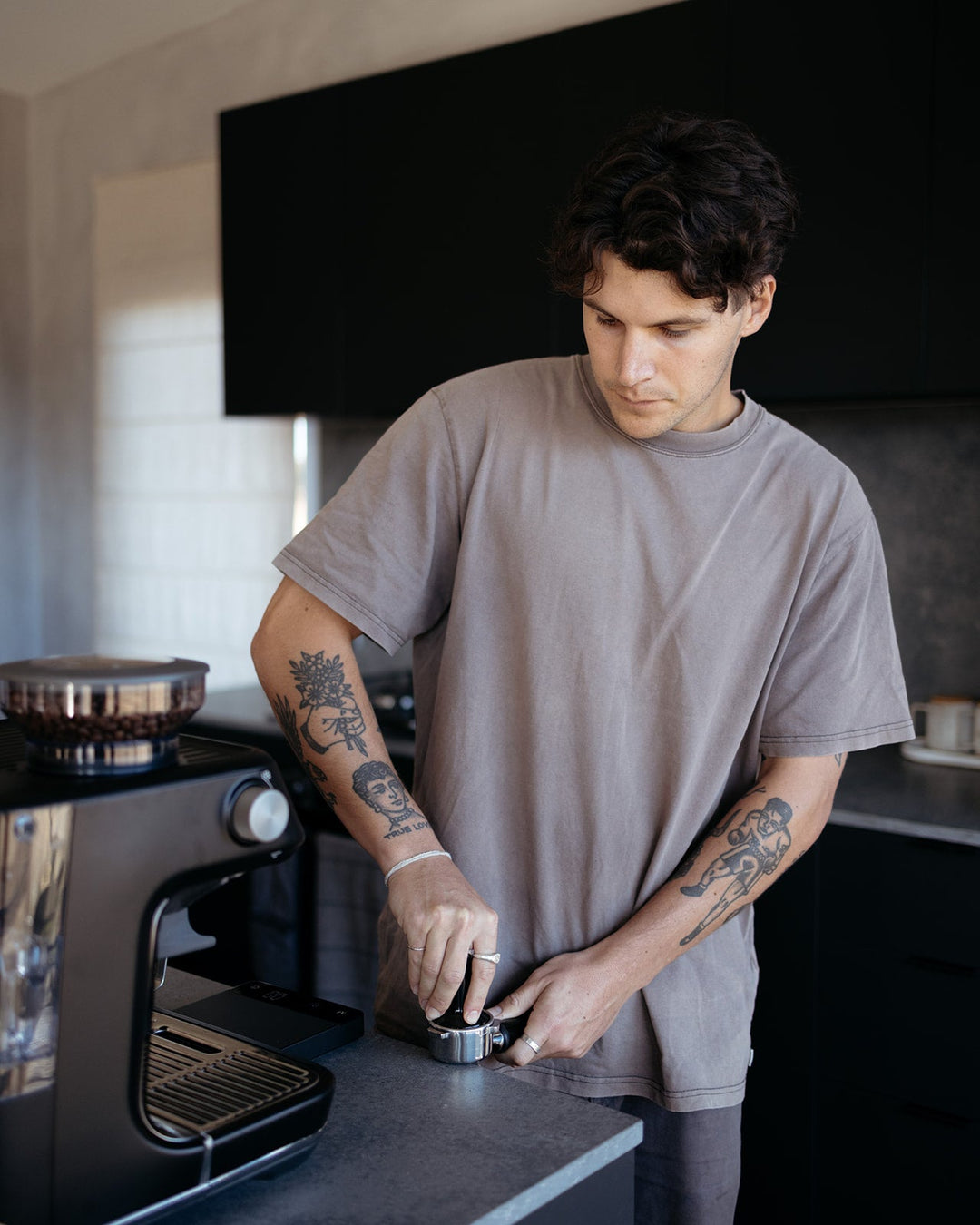How SOE Single Origin Espresso Improves Your Daily Coffee Ritual
How SOE Single Origin Espresso Improves Your Daily Coffee Ritual
Blog Article
Recognizing Coffee Beans: the Trip From Espresso to Blended Coffee Beans

The Beginnings of Coffee: A Worldwide Viewpoint
While you could think of coffee as a modern-day staple, its origins map back centuries, intertwining with societies throughout the globe. The story starts in Ethiopia, where tale says a goat herder named Kaldi uncovered the energizing impacts of coffee beans after discovering his goats romping energetically after eating them.
As profession routes expanded, coffee made its way to Europe in the 17th century, rapidly acquiring appeal. Each culture added its distinct twist to coffee preparation, enriching its background.
Farming and Harvesting of Coffee Beans
As coffee's trip progressed, the emphasis moved to the cultivation and harvesting of particular bean ranges, especially those used for espresso. You'll find that espresso beans frequently originate from Arabica or Robusta plants, each offering distinctive tastes. The excellent growing conditions consist of high elevations and abundant, well-drained soil, which enhance the beans' high quality.
During the harvest, picking methods differ. In some regions, employees hand-pick ripe cherries, making sure just the most effective fruit goes to handling. In other areas, mechanical harvesters are made use of, specifically on bigger farms. Timing is important; you want to collect when the cherries get to peak ripeness for optimum taste.
As soon as gathered, the beans are prepared for processing, which is important in determining their last taste. Comprehending the cultivation and collecting processes gives you understanding into what goes into your preferred espresso, enriching your admiration for every cup.
Handling Techniques: From Cherry to Bean
Currently that you've discovered harvesting coffee beans, let's check out how those cherries change into the coffee beans you enjoy. You'll see exactly how various harvesting techniques influence flavor, adhered to by the essential steps of fermentation and drying out. Finally, we'll damage down the milling and grading procedure that identifies your coffee's quality.
Harvesting Methods Discussed
When it involves coffee, understanding harvesting methods is essential, because they straight affect the taste and top quality of the beans you delight in. There are 2 key techniques: discerning picking and strip picking. Careful selecting involves hand-picking only ripe cherries, guaranteeing you obtain the most effective high quality beans. This approach often causes a richer taste account, though it's more labor-intensive. On the other hand, strip choosing means collecting all cherries simultaneously, no matter ripeness. While it's quicker and more affordable, this can cause a mix of flavors, impacting the end product. Ultimately, the choice of gathering method can greatly affect your coffee experience, so it's worth knowing just how those beans made it to your cup.
Fermentation and Drying Out
After gathering, the next action in processing coffee beans play a significant duty in forming their taste. You'll discover that fermentation is crucial, as it assists break down the mucilage bordering the beans, improving their taste profile. Depending on the method, this procedure can last from a few hours to several days, with differing results based on temperature and moisture.
As soon as fermentation is complete, drying out complies with, which is equally important. You can pick from mechanical or sun-drying drying methods. Sun-drying permits the beans to soak up flavors from the environment, while mechanical drying out warranties constant wetness levels no matter climate. Correct drying is important to stop mold and mildew and protect the beans' top quality, ultimately influencing your mug of coffee.
Milling and Grading Process
As fermentation and drying set the stage for taste advancement, the milling and grading process warranties that just the finest coffee beans make it to your cup. This phase entails getting rid of the external layers of the coffee cherry, including the parchment and husk. After milling, the beans are arranged by dimension and weight, making certain a consistent high quality. You'll locate that grading assists recognize flaws and classify beans, which affects flavor and scent. Top notch beans get a greater quality, resulting in a richer coffee experience. As soon as rated, the beans are prepared for packaging and delivery, preserving their unique features. This precise process is important for supplying the remarkable preference you enjoy in every sip of your favored brew.
Toasting Strategies: Unlocking Flavor Prospective
When you roast coffee beans, the approach you pick can substantially influence the taste account. Recognizing the relationship between time, temperature, and toasting techniques is key to disclosing the capacity of your brew. Let's check out how these elements come together to produce the perfect mug.
Roasting Methods Described
While you might assume that all coffee toasting methods produce the very same results, the truth is that each strategy discloses special taste possibilities in the beans. You can pick between approaches like drum toasting, air roasting, and even typical pan roasting. Drum roasting makes use of a turning drum to evenly disperse more info here warm, improving caramelization and creating a well balanced taste. Air roasting, on the various other hand, flows warm air around the beans, advertising a lighter roast with noticable acidity. Pan toasting enables for hands-on control but requires continuous focus to stay clear of burning. Each technique has its nuances, so trying out various methods can help you find the perfect roast that lines up with your taste preferences. Delight in the trip of finding your perfect mug!

Influence On Taste Account
Different toasting methods not only influence the process yet also substantially affect the flavor account of the coffee beans. When you select a light roast, you'll experience intense level of acidity and floral notes, showcasing the bean's origin. On the other hand, a tool roast balances level of acidity with sweet taste, commonly revealing chocolatey touches. Dark roasts, on the various other hand, highlight bold, smoky tastes, sometimes masking the bean's distinct attributes. Each strategy reveals different oils and compounds, causing a large range of flavors. By exploring with numerous toasting designs, you can uncover which accounts reverberate with your taste. Comprehending these nuances helps you appreciate the artistry behind your cup of coffee, enhancing your general experience with every sip.
Time and Temperature Variables
To release the complete taste capacity of coffee beans, both time and temperature throughout the toasting process play considerable duties. When toasting, you'll discover that higher temperatures can quickly develop tastes, however if you rush it, you could wind up with scorched notes. Alternatively, reduced temperature levels enable a more steady flavor development, showcasing the beans' one-of-a-kind features.

Timing is equally as important; prolonging the roast too long can bring about a loss of acidity and illumination, while too brief a roast might leave the beans underdeveloped. Discovering that pleasant spot requires technique and testing. By readjusting these elements, you can expose the rich, complicated tastes hidden within each bean, producing an absolutely impressive coffee experience.
The Art of Blending: Crafting Special Coffee Profiles

Start by choosing a base coffee that gives a strong foundation. Then, choose complementary beans to improve specific flavor notes. A brilliant Ethiopian bean can bring fruitiness, while an abundant Brazilian coffee includes body. Trial and error is key-- don't be scared to change ratios up until you find your excellent account.
As you blend, remember that each mix narrates. You're not simply making coffee; you're developing an experience. Take your time, preference regularly, and appreciate the trip of discovering your signature blend - Single Origin Espresso.
Brewing Approaches: How Preparation Impacts Taste
Mixing coffee opens up a domain of taste opportunities, however exactly how you brew that mix can considerably influence your last cup. Different developing approaches draw out distinct flavors and fragrances, so it's essential to choose intelligently. For example, a French press enables oils and sediments to continue to be, producing a rich, robust experience. On the other hand, a pour-over highlights the coffee's clarity and illumination, ideal for showcasing delicate notes.
Espresso, with its high stress, creates a concentrated shot that accentuates sweet taste and crema. If you choose a lighter brew, take into consideration a cool brew technique; it yields a smooth, much less acidic taste.
Adjusting variables like water temperature level, grind size, and make time can change your coffee's profile. Accept the art of brewing to find the tastes concealed in your coffee blends.
The Future of Coffee: Sustainability and Innovation
As the coffee market evolves, sustainability and development are coming to be important for resolving environmental obstacles and conference consumer demands. You'll observe that even more coffee firms are taking on environmentally friendly methods, from sourcing beans morally to applying sustainable farming techniques. These shifts not just help the planet however likewise boost the top quality of the coffee you enjoy.
You might see innovations like biodegradable packaging and water-saving brewing techniques that decrease waste. Advanced modern technology, such as blockchain, is additionally becoming prominent, making sure openness in the supply chain, which enables you to map your coffee back to its beginnings.
In enhancement, buying local neighborhoods and supporting farmers through fair profession official statement campaigns cultivates a much more sustainable coffee environment. As you drink your next mug, keep in mind that your options can add to a brighter future for coffee. By deciding for lasting brands, you're not just delighting in a beverage; you're making a positive influence on the globe.
Often Asked Questions
What Is the Distinction Between Arabica and Robusta Beans?
Arabica beans are smoother, sweeter, and have a greater level of acidity, while robusta beans are more powerful, extra bitter, and have even more caffeine. When brewing your coffee., you'll notice these distinctions in flavor and fragrance.
Exactly How Does Elevation Affect Coffee Bean Flavor?
Elevation impacts coffee bean taste significantly. Greater elevations generate beans with brighter acidity and facility flavors, while lower elevations usually generate beans that are larger and less nuanced. You'll discover these distinctions in your mug!
What Are the Health Advantages of Alcohol Consumption Coffee?
Consuming coffee can boost your energy, boost psychological emphasis, and even boost physical performance. It's rich in anti-oxidants, may reduce the danger of particular diseases, and can advertise a much healthier metabolism when eaten in small amounts.
Can Coffee Beans Be Recycled for Brewing?
Yes, you can recycle coffee beans for developing, but the flavor could be weak. If you enjoy trying out, try reusing them in various means, like cold brews or including in smoothies for an added kick.
How Should I Shop Coffee Beans for Quality?
To maintain your coffee beans fresh, store them in a closed container in a cool, dark location. Avoid subjecting them to warm, wetness, or light, as these factors can rapidly deteriorate their taste and fragrance.
Understanding Coffee Beans: the Journey From Espresso to Blended Coffee Beans.
Currently that you have actually found out concerning collecting coffee beans, allow's discover just how those cherries change right into the coffee beans you enjoy.When you roast coffee beans, the approach you pick can considerably influence the taste profile - Single Origin Espresso.While you may believe that all coffee roasting methods yield the very same results, the reality is that each method reveals distinct flavor potentials in the beans.Different toasting techniques not just influence the process but also significantly affect the flavor account of the coffee beans
Report this page